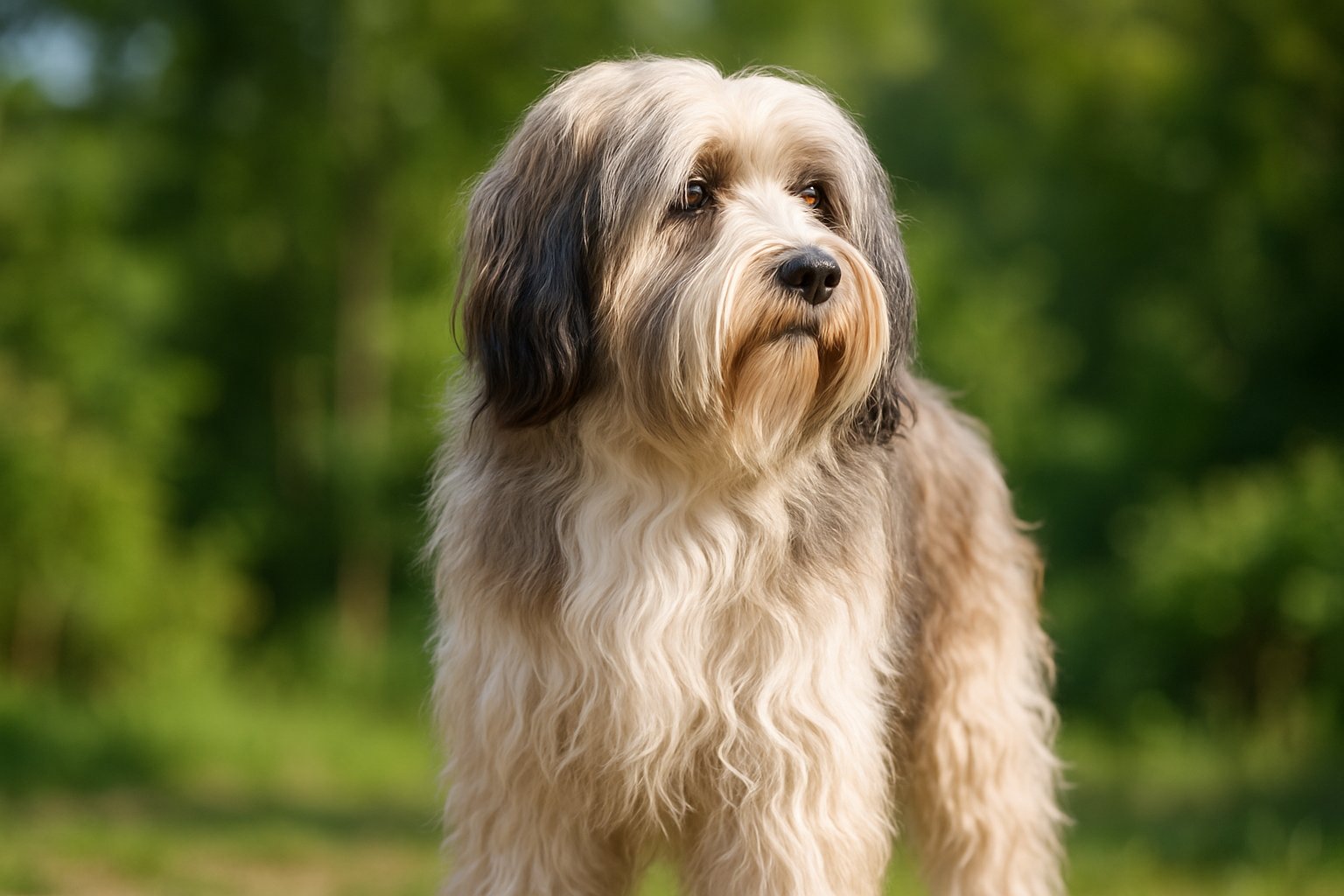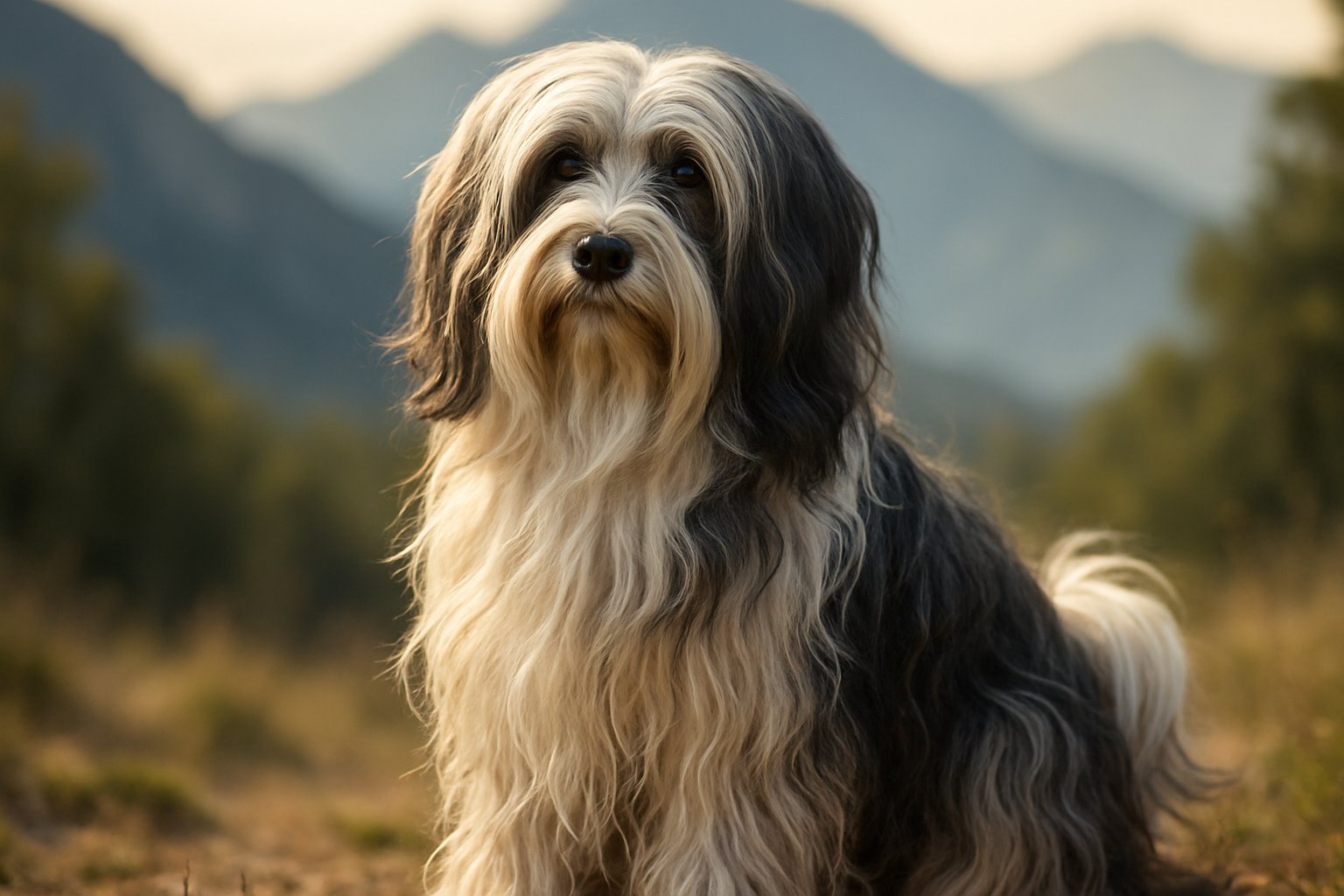Tibetan Terriers are a unique and interesting dog breed with a long history. While many people know them for their friendly personality and fluffy coats, there is much more to these dogs than meets the eye.
Learning new facts about Tibetan Terriers can help you better understand their nature and what makes them special as companions. Whether you already have one of these dogs or are just curious, exploring their lesser-known traits can be both fun and useful for any dog lover.
1. Tibetan Terriers are not true terriers but were named so by Europeans due to their similarity in appearance.
If you think Tibetan Terriers belong to the terrier group, that’s a common mistake. Despite the name, these dogs are not actually terriers. Europeans gave them the “terrier” name because of their size and how they looked. They noticed these dogs looked a lot like the terriers they already knew. In reality, Tibetan Terriers come from a completely different background. They belong to the non-sporting group instead of the terrier family.

2. They originated from a remote area in Tibet called the ‘Lost Valley,’ cut off after a 14th-century earthquake.
- Tibetan Terriers came from a secluded part of Tibet known as the “Lost Valley.” This area got its name after a major earthquake in the 14th century destroyed the main road, isolating the valley from the outside world. Because of this, only a few people and their animals lived there for a long time.
- Being so cut off helped shape the unique traits of the Tibetan Terrier. You can see how these dogs adapted to living in harsh, mountain environments. Their coats are thick and help protect them from cold weather.
- The isolation also made Tibetan Terriers a rare breed outside their homeland for many years. Their story begins in a real place with a very unique history, not just a legend. For more details on their origin, visit this section on the Tibetan Terrier’s Lost Valley roots.
3. Buddhist monks bred Tibetan Terriers primarily as companion dogs, not for hunting or working.
- Tibetan Terriers were originally bred by Buddhist monks in Tibet. They were not created to be hunters or workers in the traditional sense. Instead, they served as devoted companions within the monastery walls.
- You would not have found Tibetan Terriers out in the field chasing game or herding livestock. Their main job was to keep monks company and offer comfort.
- In addition to being companions, these dogs sometimes acted as watchdogs. They helped alert monks to strangers or unusual noises, but protection was secondary to companionship.
- Today, you can still see their gentle and affectionate nature. These traits remain strong because the monks prioritized friendliness and connection over working abilities when breeding these dogs.
- Many Tibetan families also kept these dogs for their companionship. It was believed that Tibetan Terriers could bring good luck and happiness, which added to their valued role in Tibetan homes and monasteries.
4. The breed has existed for over 2,000 years, making it one of the oldest dog breeds.
Tibetan Terriers have a history that reaches back over 2,000 years. Ancient records and local stories from the Himalayas mention dogs with their unique look and traits. You can find information about their long past in texts and carvings from Tibet. These dogs lived in remote mountain villages with Buddhist monks and families. The Tibetan Terrier is recognized as one of the oldest dog breeds in the world. Its history is linked closely to Tibetan culture and traditions.
5. They have a distinctive long, shiny coat parted evenly across the body and head.
Tibetan Terriers are known for their beautiful coat. Their hair is long, fine, and usually has a natural shine. This coat is one of the breed’s most noticeable features. You will see that the hair parts down the middle of the back and head. This even parting makes Tibetan Terriers easy to identify among other breeds.
6. Tibetan Terriers are medium-sized dogs, well-suited for various roles including therapy and companion work.
- Tibetan Terriers are not too big or too small. Their medium size makes them easier to handle and more adaptable to many living spaces.
- This breed is known for its gentle and friendly nature. You will find that Tibetan Terriers bond closely with their families and enjoy spending time with people.
- Because of their calm personality and moderate energy level, they do well as companion animals. They fit nicely into homes where they get attention and affection.
- Tibetan Terriers also make good candidates for therapy work. Their even temperament and willingness to interact with others allow them to help those who need comfort or emotional support.
- Many families choose Tibetan Terriers for both companionship and activities that involve helping others. Their history as long-time friends to people only adds to their reputation in these roles.
7. They are known for their affectionate nature and form strong bonds with families
- Tibetan Terriers are well-known for being loving and loyal dogs. They often create deep connections with their families and are happiest when surrounded by people they trust.
- You might notice that Tibetan Terriers like to stay close to you throughout the day. They often follow their owners from room to room because they want to be near their loved ones.
- These dogs are especially attentive to their family’s moods and routines. They can pick up on your emotions and may try to comfort you if you are feeling down.
- Tibetan Terriers usually form strong bonds not just with one person, but with everyone in the household. They are good companions for adults and children, making them suitable for many types of families.
- Because of their affectionate and loyal temperament, Tibetan Terriers often thrive in homes where they get plenty of attention. They may not do well if left alone for long periods, as they enjoy regular interaction.
8. This breed adapts well to homes with school-age children who understand dog handling.
Tibetan Terriers adjust well to family life, especially when your children are old enough to treat dogs with respect. School-age kids who know how to approach and handle dogs gently will be a good match for this breed. These dogs are friendly and social, but they appreciate calm and predictable interactions. They can become overwhelmed by rough play or sudden loud noises often made by very young children.

9. Despite their name, Tibetan Terriers belong to a different group than terriers.
You might think Tibetan Terriers are members of the terrier group because of their name. This isn’t the case. Tibetan Terriers actually belong to the Non-Sporting Group. This sets them apart from terrier breeds, which were developed to hunt and dig for small animals. Tibetan Terriers, on the other hand, were bred as herding and companion dogs.



